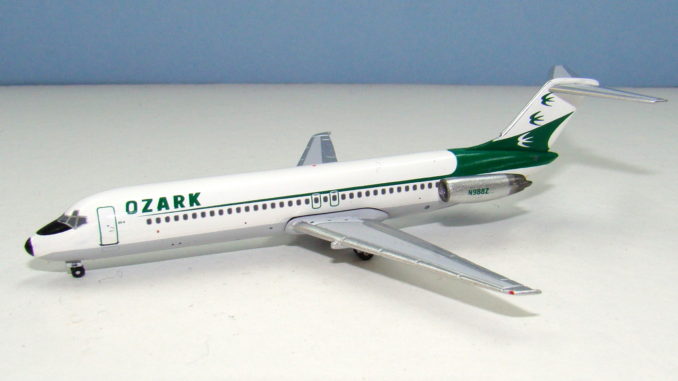
The DC-9 arrived just as many of the US local service airlines were looking for their first pure jets but in the absence of a working DC-9-10 mould we in 1:400 are only able to pick-up the longer and later DC-9-30s and 50s. Even then there is only one available mould in regular use and that is of course from Aeroclassics. Fortunately, it is a beauty.
THE REAL THING

Technically St Louis based Ozark had acquired its first jets as early as July 1959 however these were jet-prop Fairchild F-27s and not pure jets. As with all the local service airlines Ozark was operating a dense network of multi-stop routes, which provided limited revenue potential, and was banned from competing against the trunk airlines. This limited the airlines need for pure jets and also their ability to afford them.
The mid-60s were nonetheless a major growth period for Ozark as their new President Thomas L. Grace almost doubled the fleet, and in 1964 ordered the first jets. The DC-9 proved popular with several of the local service airlines (Bonanza, West Coast, North Central, Southern, Trans-Texas and Allegheny also acquired them) and Ozark’s first joined in May 1966.
Seven series 15s were added before the airline switched to the larger series 31 in February 1968. By 1971 the fleet was all jet and consisted of 17 DC-9s and 21 prop-jet FH-227s. Ozark was onto a winner during the 70s and gradually built up its fleet whilst still managing to make a profit. This reached $7.1 million in 1976 and provided a war chest for the airline to acquire secondhand DC-9s – mainly from Delta.
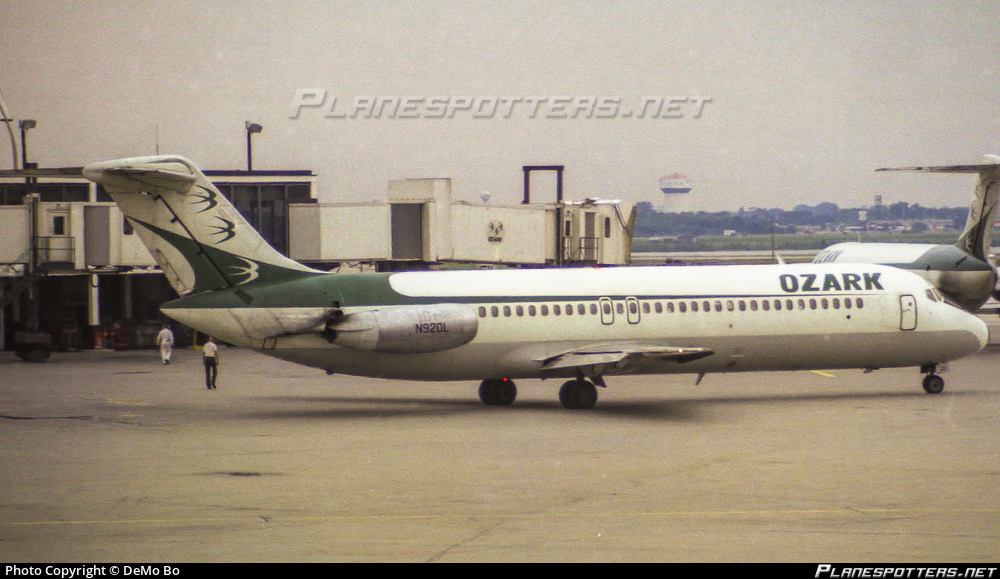
N988Z was actually older than Ozark’s own DC-9-31s, having been first delivered to Northeast Airlines as N980NE on December 15, 1967. When Northeast was merged into Delta in August 1972 she acquired the widget but as with much of Northeast’s fleet was non-standard and sold on quite quickly. She was one of eight ex-Northeast birds that joined Ozark (they also took 15 purely Delta operated DC-9s during the same 1974-1981 period).
Despite, or perhaps because of its success, Ozark was unable to survive the merger mania of the 1980s and was acquired by its St Louis neighbor TWA in 1986. N988Z thus took up the twin stripe and was finally `stored at Victorville after her last revenue flight on September 5, 2001. She had operated through the entire period that witnessed the local service carriers grow into majors and then get swallowed up by the remaining trunks. Regardless of her owner however she provided sterling reliable Douglas service for over 30 years.
THE MODEL
The format for my reviews is to split them into three key areas:
- The mould of the aircraft
- The paint and livery
- Printing and quality control
Each can get a maximum score of 10 for a section giving a maximum combined score of 30.
THE MOULD
There have been two models now made of an Ozark DC-9-30 wearing the 1960/70s scheme (although the livery varies in slight detail). The other one is a 2003 made example from Phoenix from a bygone age when Phoenix made US classic models a least occasionally. For years Ozark has been under-represented and so that model has formed part of my collection. To be fair to the old Phoenix mould considering its vintage it isn’t awful, however it pales in comparison to the 2006 Aeroclassics DC-9 mould being used here on this 2018 model.

There is no problem with the mould being twelve years old as it remains the best DC-9 in this scale and one of the finest 1:400 scale moulds in general. In detail several aspects of the old Phoenix mould are incorrect. Most obviously the nose profile is too chunky and the undercarriage sits the whole aircraft too high. The tail top also has a seam line – and the horizontal stabilisers often detach themselves.
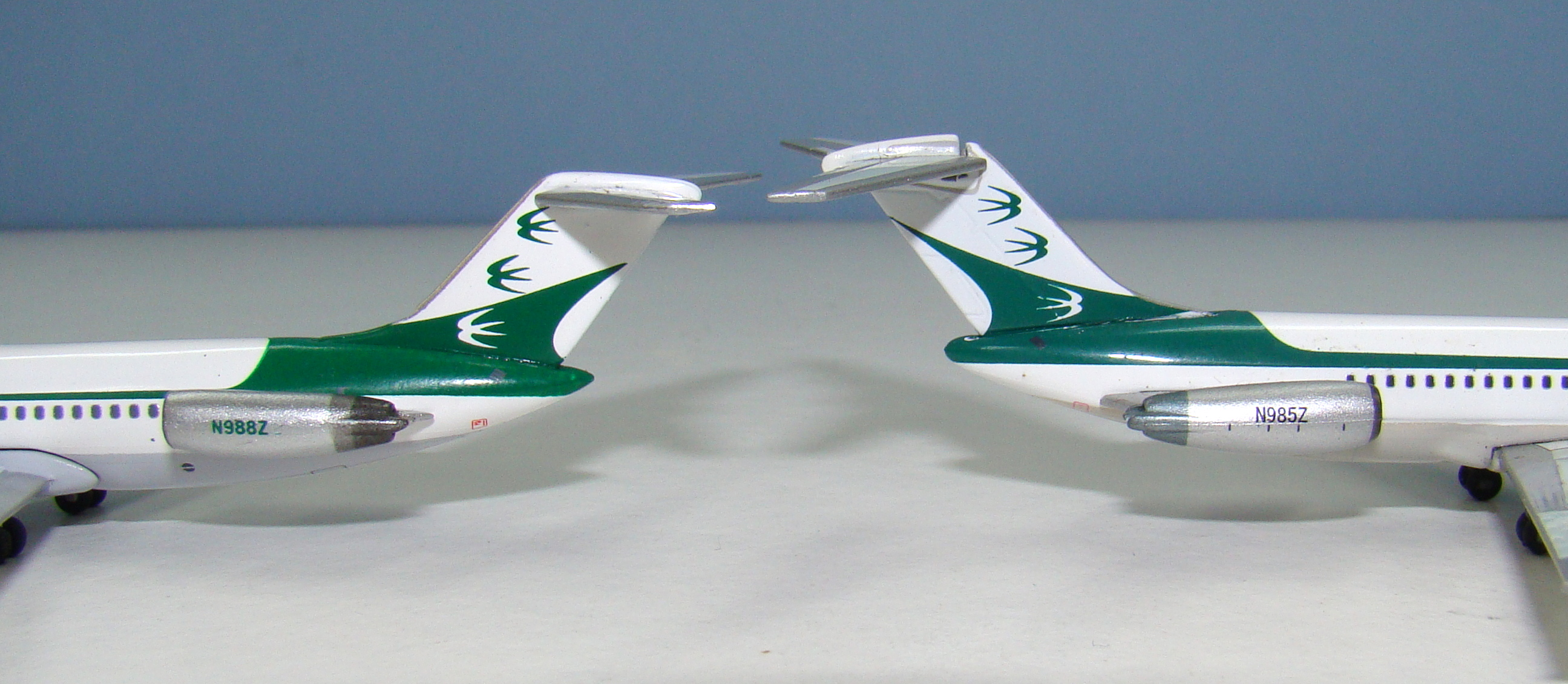
Nose shape is an area few of the 1:400 DC-9s have got correct but the Aeroclassics DC-9 has a perfectly shaped nose and cockpit region. The nosegear is well placed and suitably small, as is the maingear.
About the only place the Phoenix perhaps wins is that it has a more discrete wing seam line, however the Aeroclassics seam is not obtrusive and of no concern of mine. The wings are detailed and thin, the engines perfectly sized and mounted and the rear fuselage and vertical stabilizer faultless. I still await Aeroclassics creating a DC-9-10 version of it to go with their series 30 and 51.
SCORE – 10
PAINT & LIVERY

As I said Phoenix have already made a DC-9 wearing almost the same livery, however it is not the same. Their version wears the delivery colours with smaller titles whereas the Aeroclassics version wears the 1970s version of the scheme with larger titles. It is actually difficult to find photos of this airframe wearing this scheme but easier to find sister ships wearing it which I will use for this comparison.
The Ozark green is actually a very dark shade, darker than the modified 1980s livery. Phoenix has used a deeper colour than Aeroclassis and it may be slightly more accurate. Even so the Aeroclassics version is within a reasonable degree of similarity to the photos I see.
Complaints about the rest of the scheme are verging on the super nitpicky I admit. The three swallows on the tail are well placed as is the green stripe but I do think that the stripe is a little too low around the engines and at the front its tip ends before the O of Ozark, which is premature.
Other details are accurate and I like the grey belly, anti-glare shield, black nosecone and small registration on the natural metal engines. I could give this an eight but I think that would be harsh. Aside from the stripe tip my other points are arguably the sort of thing that is variable due to fleet application or old photo stock colouring changes over time.
SCORE – 9
PRINTING & QUALITY CONTROL
Onto the printing and it’s pretty decent. Recently Aeroclassics hasn’t always got the cockpit windows of its DC-9s correct (see July’s Kenya Airways release for example) but on this model the windows are fine. Other printing is sparse but then again it was on the real thing too. My only minor annnoyance is that the really obvious rudder line is not printed on the vertical stabilizer. Also the back of the model is way to clean to be an in service DC-9 – but then again you can hardly blame Aeroclassics for that. I wonder whether collectors would appreciate these old DC-9s and 727s with the accumulated grime and dirt they acquired quickly in service printed on?
Construction quality is tip-top – no qualms there. Some recent Dc-9s have had rather loose wing/fuselage joins but this model is again fine.
SCORE – 9
CONCLUSION
It is pleasing to be able to give an Aeroclassics model a high score. Too often this year many of the excellent release choices from the manufacturer have rather fallen down when they arrive home and get the detailed eye cast over them. This model stands up well and is a worthy successor to the old Phoenix model, which I admit I will keep since Ozark models are so rare in general and the liveries aren’t exactly the same. Good job AC!
FINAL SCORE – 28/30


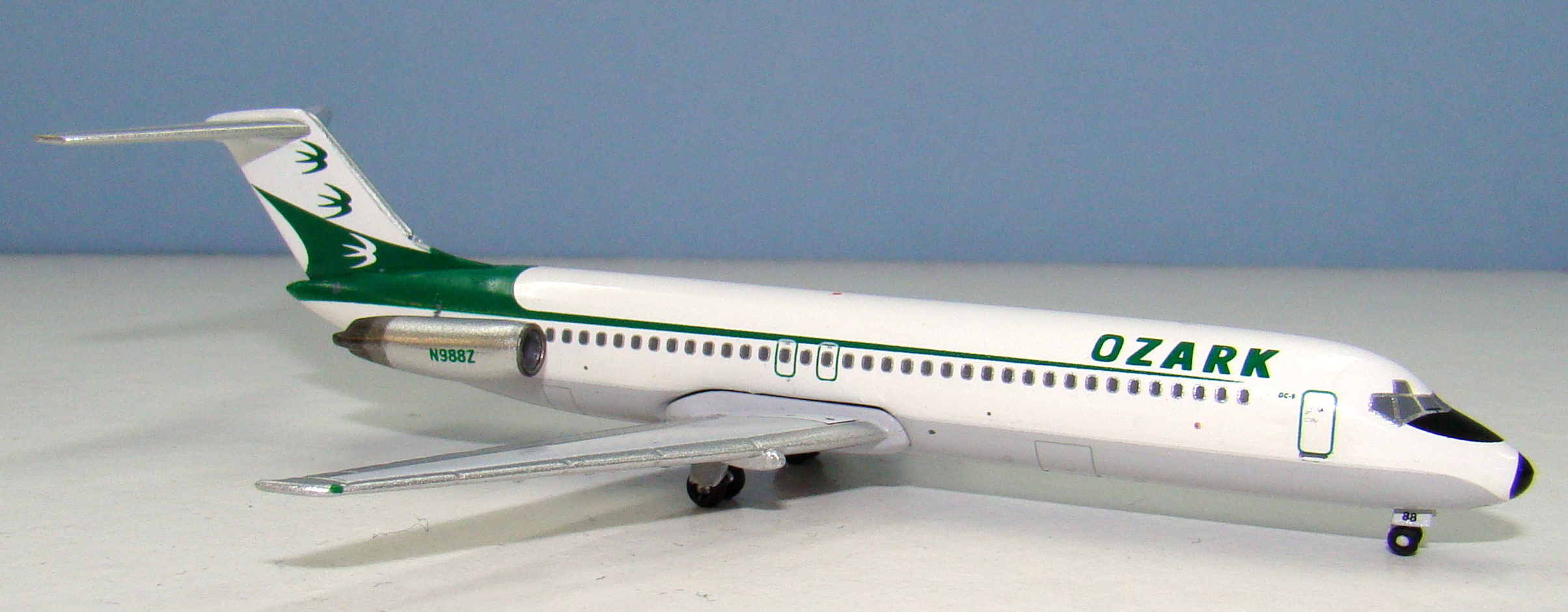
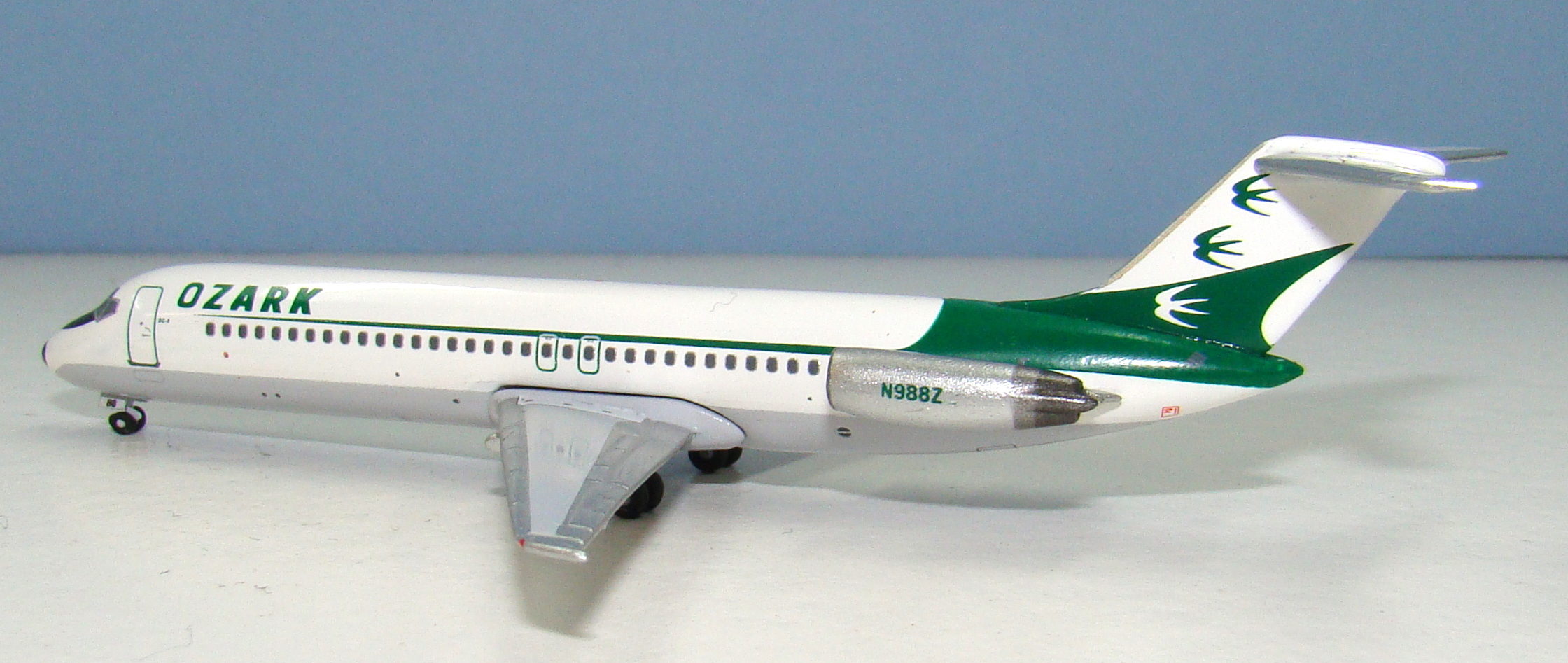

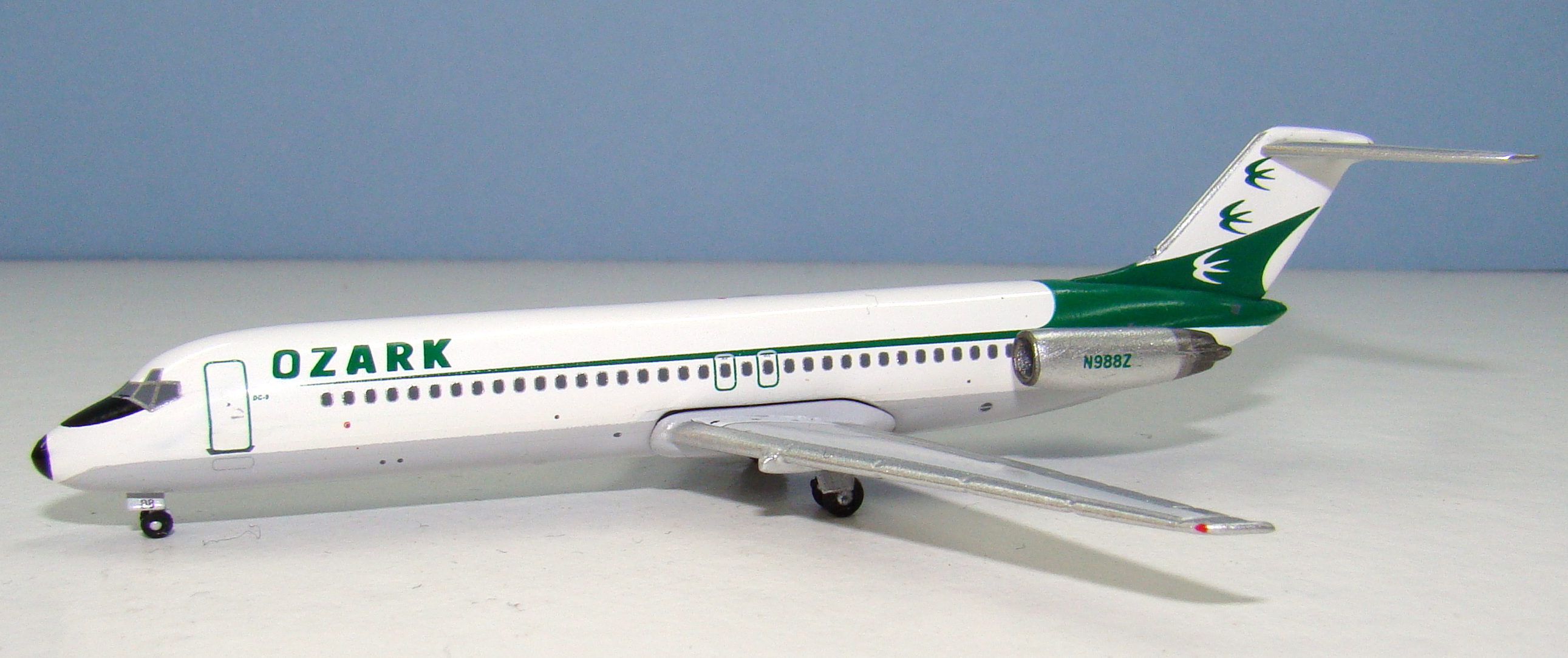
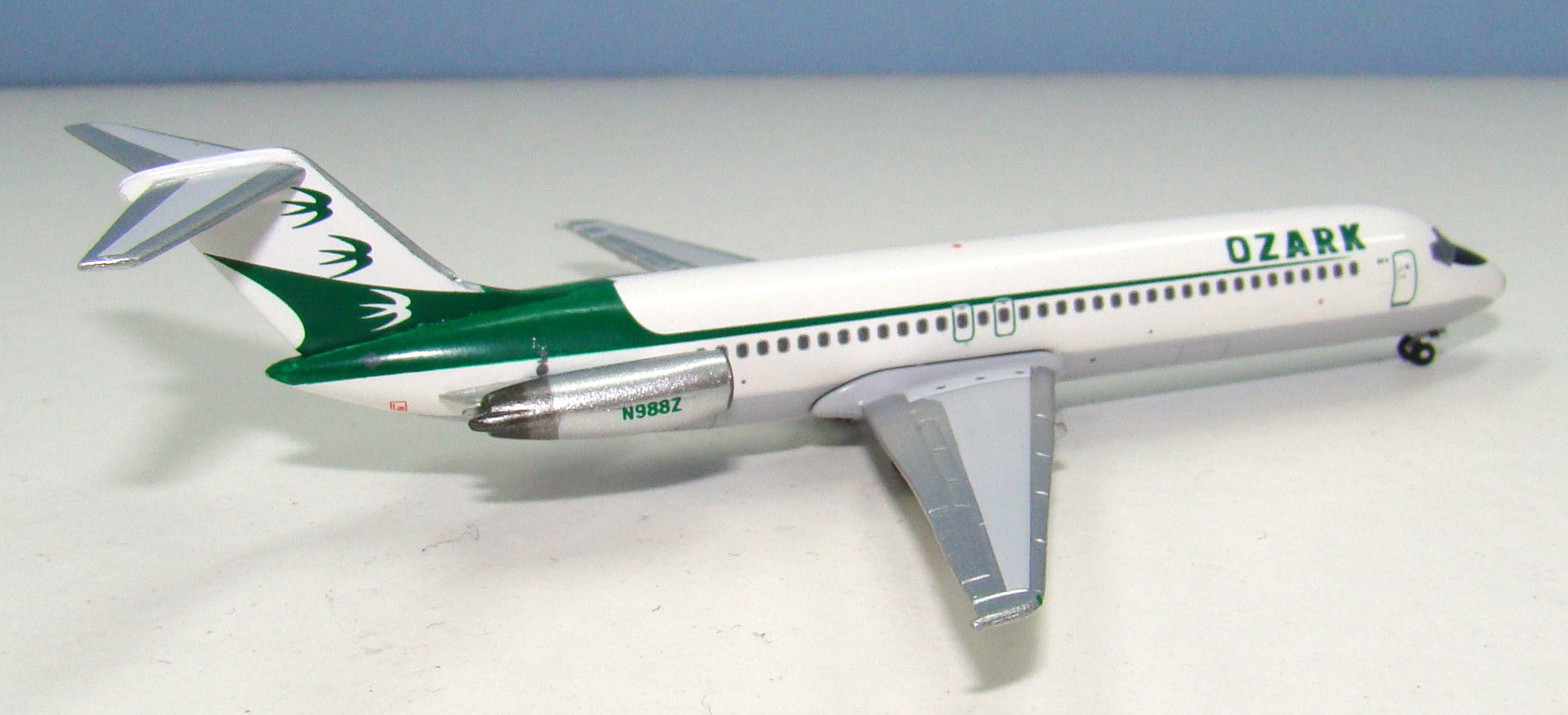
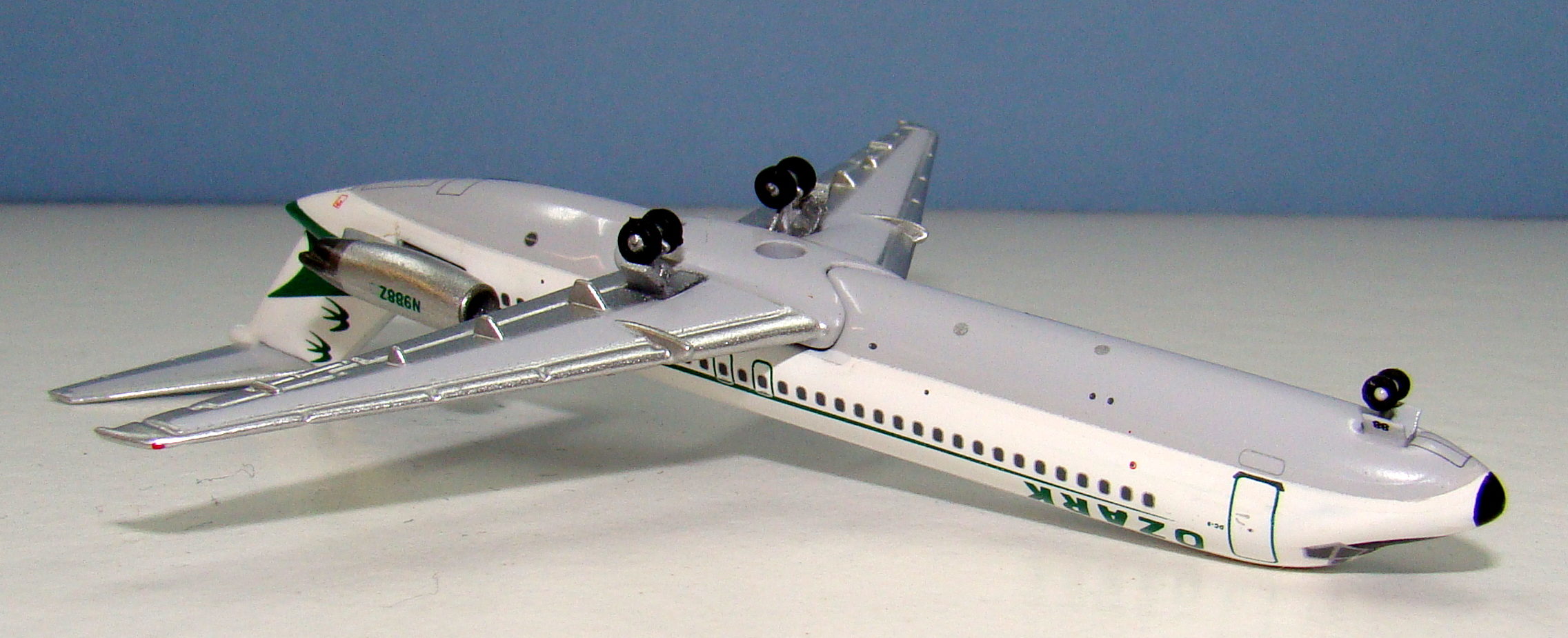

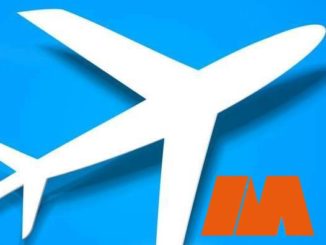
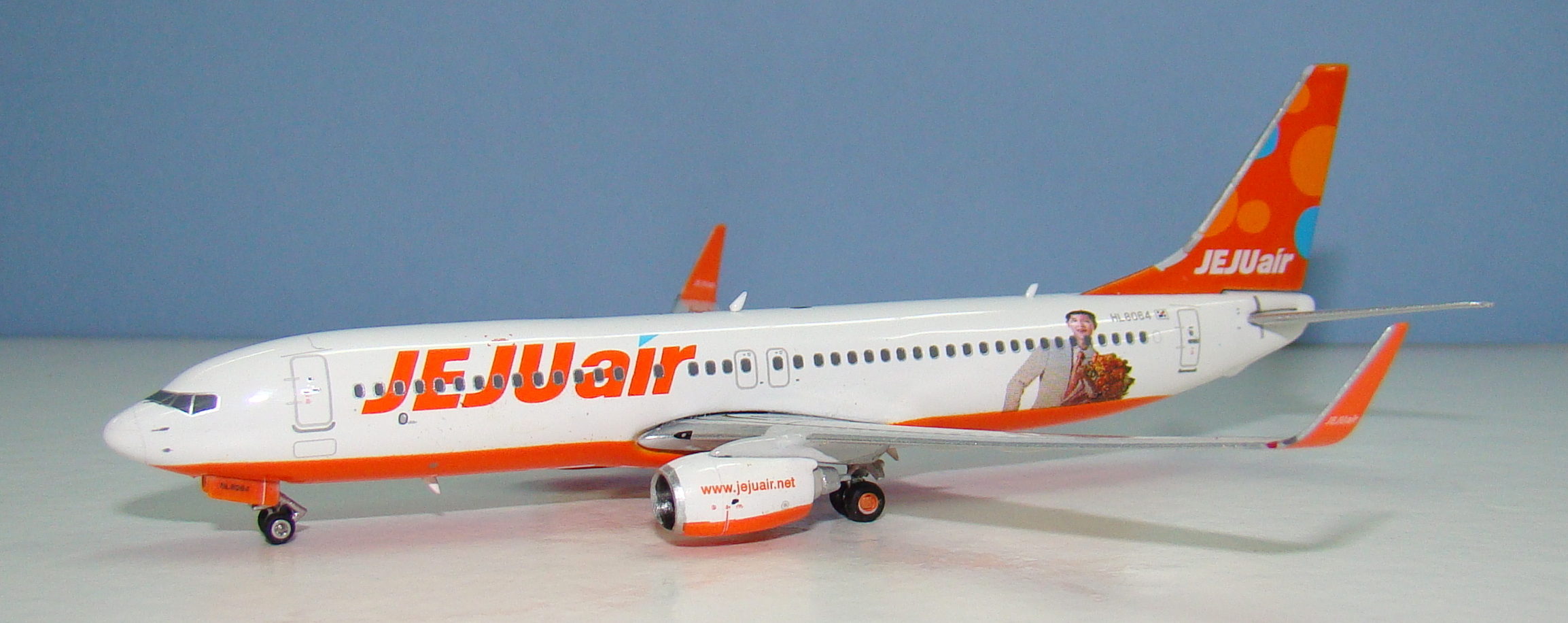
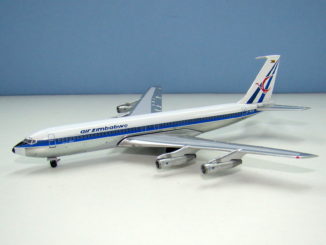
I have this one on order and look forward to receiving it. You mention that the Phoenix version has smaller titles..but only on one side as it has the larger titles on the other side. Not sure if this is an error, or if Ozark were trialing both sizes?
I hadn’t noticed that but checking my photos I see you’re right – weird. They also painted the anti-glare green and I can’t see any photos of the real thing to suggest that is correct either.